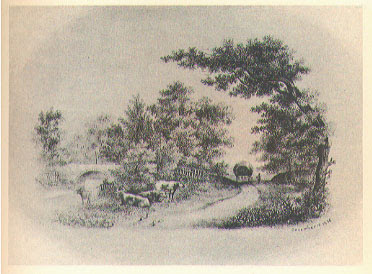I often write about celtic use and customs!. I love the perfect relation with nature in a wheel of the year in which months, seasons, equinox and solstices are perfectly combined with human cycle of life. Nature and its elements became the essence of everything and allows us to understand many of human behaviours.
Nei miei precedenti post ho spesso scritto di usanze e tradizioni celtiche. Mi interessa l' armonia con la natura, la una ‘ruota dell'anno’ in cui mesi, stagioni, equinozi e solstizi si combinano perfettamente con il ciclo della vita umana. Credo che con i Celti, più che in qualunque altra civiltà, la natura e i suoi elementi diventano l'essenza di tutto e i fatti accadono secondo un ritmo naturale che scandisce la vita e i comportamenti umani.
 |
| I Celti, Vita quotidiana, Neil Grant, San Paolo Edizioni |
The “Wheel Of the Year “ is a cycle of festivals celebrate throughout the year in a seasonal path were cycles are of crucial importance for the survival of the species as the represent life, death ad rebirth of the Goddess and the God in their various incarnations.
Earth can’t fail her circular journey thought death to renewal as the sun can’t fail to return and bring back light and warmth!
La "Ruota dell'Anno" è più di un calendario liturgico pagano. Le festività sono celebrate in un percorso stagionale in cui il ciclo è di importanza cruciale per la sopravvivenza della specie, per rappresentare la vita, la morte e la rinascita della dea e del dio nella loro diverse incarnazioni.
La Terra non può fallire nel suo viaggio attraverso la morte e la rinascita come il sole non può non tornare e riportare luce e calore!
 |
| I Celti, Vita quotidiana, Neil Grant, San Paolo Edizioni |
Mother Nature is symbolized with her feminine aspect and earth is a natural mother, the Goddess, who cares for her all creatures in a long journey from seeding to germination, from blossoming to fruit, from decay to rest. Ancient image of the great Mother Goddess dates back to Stone age. They were fertile images that emphasizing hips, buttocks, thighs and breasts. She was Mother nature and through the cycle of seasons her body, changed from a maiden, mother and crone.
Madre Natura è rappresentata con il suo aspetto femminile e la terra è come una madre naturale, la Dea, che si prende cura di tutte le sue creature in un lungo viaggio dalla semina alla germinazione, dal fiore al frutto, dal declino alla morte. Le antiche immagini della Dea Madre risalgono all'età della pietra. Esse enfatizzano fianchi, glutei, cosce e seni. Ella, in qualità di Madre Natura, attraversa il ciclo delle stagioni e il suo corpo, passa da quello di una fanciulla, a quello di madre anziana.
 |
| I Celti, Vita quotidiana, Neil Grant, San Paolo Edizioni |
The maiden emerges now, at February with Imbolc festival, as the earth gently awakens in the spring and prepares to seed and to germinate.
Imolc is a festival of hope and renewal after the darkest time of the year with a growing light. It is a promise of fertility,, new life, and new hope.
La fanciulla emerge ora a febbraio con Imbolc, la celebrazione del delicato risveglio primaverile della terra che si prepara alla semina e germinazione.
Siamo al termine del periodo più buio dell'anno, la luce è crescente ed Imbolc è un festival di speranza e di rinnovamento, una promessa di fecondità, nuova vita, e nuovi desideri.
 |
| I Celti, Vita quotidiana, Neil Grant, San Paolo Edizioni |
Feast of the Bride, feast of the maiden.
Melodious Bride of the fair palms.
Thou Bride fair charming,
Pleasant to me the breath of thy mouth,
When I would go among strangers
'Thou thyself wert the hearer of my tale.
(From Alexander Carmichael's collection of folk poetry).


























